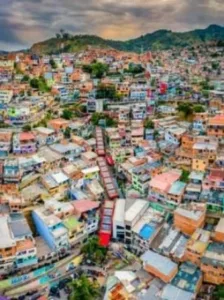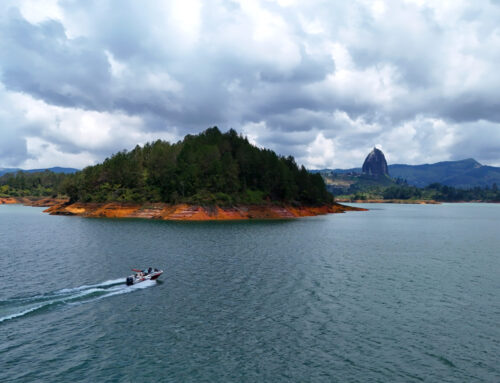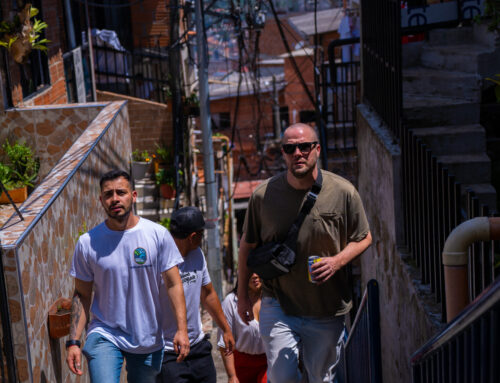Having backpacked through bustling markets and climbed ancient ruins across South America, Medellín holds a unique charm for me. Nestled in the embrace of verdant coffee hills, it’s a city that’s not only beautiful but also emblematic of transformation. As a seasoned traveler, though, I vividly recall the whispers of its dark past – a place synonymous with violence. Comuna 13, perched precariously on the slopes of San Javier, was once the epicenter of this storm. But talking to local residents now paints a vastly different picture – a story of unwavering resilience where art became the weapon of choice.
Imagine Medellín in the 90s – a warzone etched into your memory. News reports blared about the “murder capital of the world,” a chilling title Medellín wore with a heavy heart. Comuna 13, isolated on the steep slopes, became a battleground for rival gangs and paramilitaries. Fear became a constant companion for residents; a simple trip to the grocery store could turn into a deadly gamble caught in the crossfire. Even the authorities weren’t a source of solace. Operation Orion, a supposed solution, left a trail of unanswered questions, heartbreak, and a wasteland called La Escondreira – a constant, grim reminder of lives lost and bodies hidden.
But the spirit of Comuna 13 wouldn’t be extinguished. The community, battered but not broken, rose like a phoenix from the ashes. The early 2000s saw a wave of unarmed resistance sweep through the streets. Mothers, their courage a shield stronger than any gun, confronted the violence with white flags. And then came the music – a powerful counterpoint to the gunshots that had plagued the neighborhood. Hip-hop artists like Kolacho emerged, their rhymes a call to peace, a message of hope echoing through the streets. His tragic death, a stark reminder of the struggle, only amplified the message. Casa Kolacho, a cultural center fueled by his memory, became a beacon of hope, a space where the youth could find solace and purpose. Breakdancing, graffiti, and rap became their weapons – tools for self-expression and a shield against the allure of gang life.
This transformation wasn’t just driven by artistic expression. The government, in 2013, finally played its part. Cable cars, like steel serpents, snaked up the steep hillsides, connecting Comuna 13 to the rest of the city. Accessibility brought opportunity, and the neighborhood bloomed. Today, the vibrant murals adorning the walls aren’t just beautiful; they’re testaments to the struggle, the perseverance, and the ultimate hope. Tourists flock to this open-air museum, their presence bringing economic lifeblood to the community. While gangs may still linger in the shadows, a new generation, armed with music and art, is carving a different path.

Walking through Comuna 13 is an experience that stays with you long after you leave. It’s a testament to the indomitable human spirit, where creativity conquered violence. Yes, Colombia has a complex past, but this neighborhood embodies its unwavering resilience. It’s not just about the rich coffee plantations and the infamous Pablo Escobar; it’s about the transformative power of art, a story that will resonate with anyone who’s ever witnessed the power of community and creativity to heal the wounds of the past. As I leave this magical city, I carry with me a newfound appreciation for Medellín, a place where the rhythm of hip-hop beats blends with the gentle murmur of hope, a city reborn.





